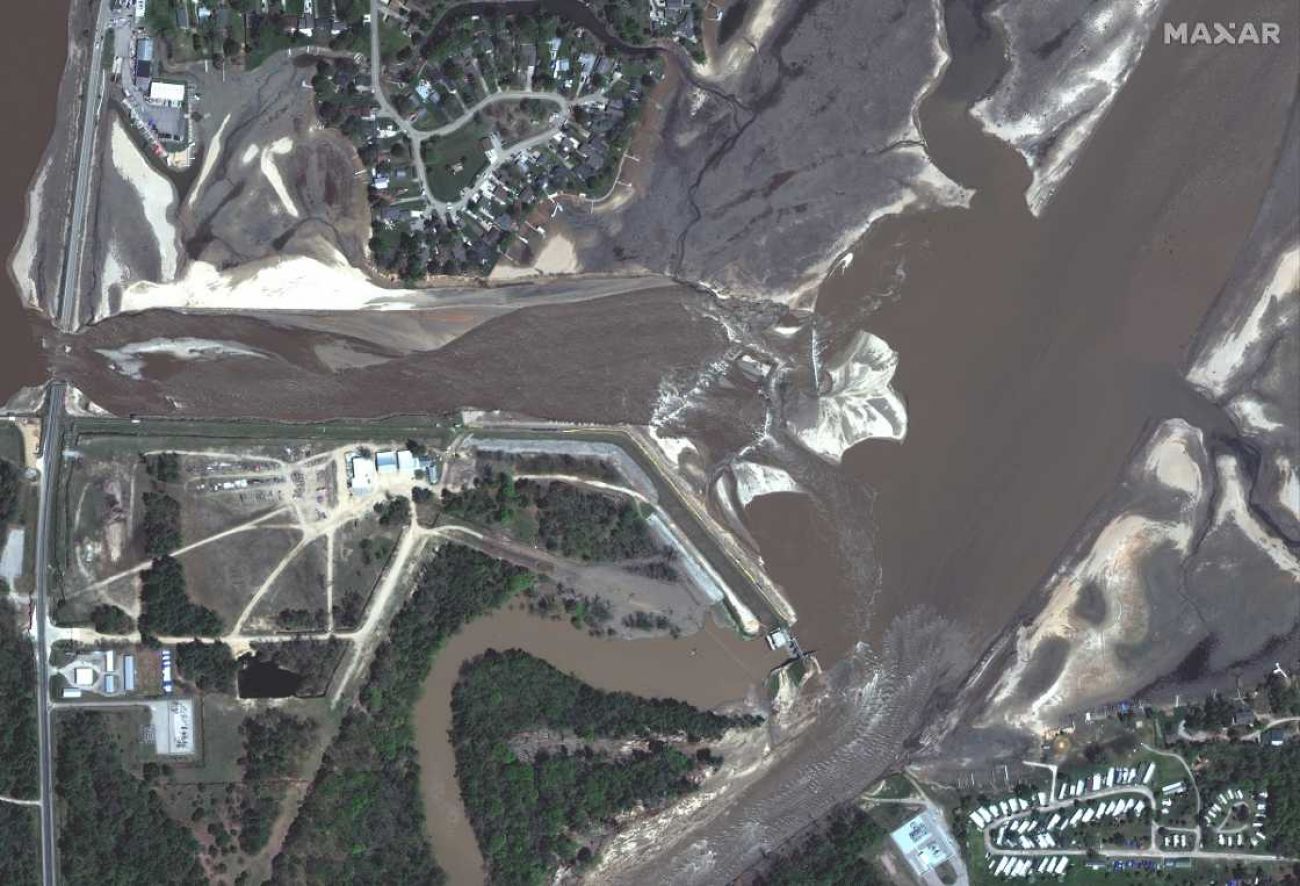Judge: Edenville Dam still poses ‘grave risk,’ needs immediate inspection

Citing “grave risk to property and public health,” a federal judge has ordered the owner of the failed Edenville Dam to inspect the dam immediately and submit a plan to address any dangers.
In an order Monday granting attorneys for the state a restraining order requiring the inspections, U.S. District Judge Paul Maloney said dam owner Boyce Hydro has been slow to comply with state orders to assess damages following the dam’s May 19 failure.
The state complained that cracks in the dam present a danger to residents who have returned to the surrounding area to retrieve belongings. In addition, the state told the court that the partial dam is diverting the flow of the Tobacco River and preventing repairs that would allow M-30 to reopen.
- Edenville Dam owner claims Michigan regulators to blame for flooding
- Two heirs bought Midland dams as a tax shelter. Tragedy followed.
- Midland failed dams, floods caused $200M in damages to 2,500 buildings
“If another storm were to come through the area, the damaged dam presents a grave risk to property and public health,” Maloney wrote in his order. “Defendants have slow-walked their response, without regard to the possibility that now-damaged dam could cause another mass flooding event.”
The order requires Boyce to immediately determine whether the dam’s Tobacco River side poses a risk to public safety, natural resources and public transportation. Boyce must propose a plan by Friday to take “immediate action” if such risk exists. The order also requires Boyce to prepare a report by June 24 on the safety and stability of the rest of the dam, and propose any actions to address issues.
Officials with the state Department of Environment, Great Lakes & Energy, which oversees Edenville Dam, could not immediately be reached for comment on the order.
The order comes four weeks after the dam failed following heavy rains, sending billions of gallons of water downstream, triggering a second failure at the downstream Sanford Dam, forcing the evacuation of more than 10,000 people and causing an estimated $200 million in damages.
Three days later, the state ordered Boyce to have an engineer evaluate the dam and report back by May 24. Boyce did not respond, according to Maloney’s order, and then missed a second deadline, too.
Boyce then indicated it would begin the inspection June 8, “but it is not clear whether the inspection occurred,” Maloney wrote.
But Lawrence Kogan, an attorney representing Boyce, said engineers hired by Boyce conducted a six-hour inspection of the dam on June 10, along with Dan DeVaun, one of the state’s two dam safety experts.
In a letter to Kogan that he filed Monday in federal court, an engineer from Ohio-based TRC Engineers discovered that the Tobacco River is eroding a “significant length” of the dam near M-30 after the dam failure altered its flow.
In the letter, engineer Shawn D. McGee recommended installation of a temporary retaining wall to divert the river’s path and prevent further erosion.
McGee also noted tension cracks and “surface sloughing” along the dam’s Tobacco River spillway, a result of erosion damage during the flood.
“The slope appears to be stable from a global perspective,” McGee wrote, but Boyce should continue to monitor the cracks and install equipment to detect any movement of the spillway’s slope.
McGee promised a follow-up “detailed inspection report” in about two weeks to itemize “critical items that need to be addressed.”
Monday’s court order is the latest in what is expected to be a long legal battle over the May 19 dam failure. It comes as multiple class-action lawsuits have been filed on behalf of flood victims, and as the Michigan Department of Environment, Great Lakes & Energy, the Federal Energy Regulatory Commission and a U.S. House of Representatives committee investigate the dam failure in separate probes.
In the wake of the flood, the state sued Boyce on June 9 in state court alleging the company is responsible for the dams’ failures and demanding it pay for costs related to the dam break.
The case was moved to federal court and, in a separate order Monday, Maloney denied the state’s request to transfer it back into the state court system. The case poses substantial questions of federal law, Maloney said, in part because federal regulators knew about Edenville Dam’s deficiencies well before the state took over regulatory duties in 2018.
FERC oversaw the Edenville dam for decades, and repeatedly warned that the dam could not withstand a major flood. FERC yanked the dam’s power generation permit in 2018 after Boyce failed to follow orders to increase its capacity to pass floodwaters.
That action transferred oversight to state regulators in Michigan, whose dam safety standards are half as stringent as those of the federal government.
State officials said they were in the process of determining whether Edenville met Michigan’s lower standard when the dam failed last month, but a group of area residents has contended that the state was aware of Edenville’s deficiencies.
The state’s lawsuit “argues that Defendants mismanaged their dams for over a decade,” Maloney wrote. “To adjudicate the claims presented, the Court must consider a federal regulatory agency’s implementation of a federal law.”
FERC has ordered Boyce to submit an incident report on the dam failure by today, and follow up with a more robust forensic analysis into the root cause of the dam’s failure.
The House committee seeking answers from EGLE and FERC about their oversight of the Edenville Dam had set a deadline of Monday for the agencies to provide answers.
Michigan Environment Watch
Michigan Environment Watch examines how public policy, industry, and other factors interact with the state’s trove of natural resources.
- See full coverage
- Subscribe
- Share tips and questions with Bridge environment reporter Kelly House
Michigan Environment Watch is made possible by generous financial support from:
Our generous Environment Watch underwriters encourage Bridge Michigan readers to also support civic journalism by becoming Bridge members. Please consider joining today.
See what new members are saying about why they donated to Bridge Michigan:
- “In order for this information to be accurate and unbiased it must be underwritten by its readers, not by special interests.” - Larry S.
- “Not many other media sources report on the topics Bridge does.” - Susan B.
- “Your journalism is outstanding and rare these days.” - Mark S.
If you want to ensure the future of nonpartisan, nonprofit Michigan journalism, please become a member today. You, too, will be asked why you donated and maybe we'll feature your quote next time!






